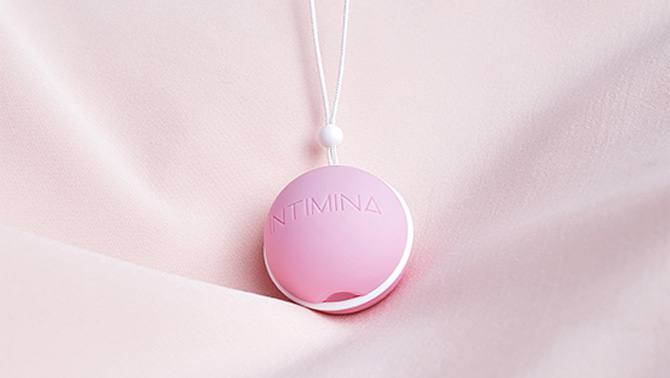The Kegel Exercises Expert Guide Everyone Should Read (Including You)
You may think you don’t need to do Kegel exercises – think again

Most of us have heard of the pelvic floor muscles and have an inkling that we’re supposed to exercise them. However, it’s often a case of out of sight, out of mind: it’s easy to forget about doing pelvic floor exercises – or Kegels – until something else prompts us to. Maybe you start noticing that a bit of pee leaks when you sneeze, or you get a strange bulging feeling down below. Not yet, you say? Do not wait for the wake-up call. A third of women will experience problems with pelvic floor muscles at some point in their lives. And although it’s not talked about much, it’s estimated 5% of men will suffer from urinary incontinence issues.
It’s never too early – or too late – to start thinking about the health of your pelvic floor. Kegel exercises can make a big difference in a matter of weeks. They only take a few minutes a day and don’t even require you to get changed into your gym gear.
INTIMINA, which manufactures menstrual cups as well as Kegel weights (we’ll come to those), has launched a 28-day challenge to help men and women get their pelvic floors in shape. The idea is to do Kegels three times a day, stepping it up a level each week. After 28 days, not only will Kegels be a part of your daily routine, but you’ll also be well on your way to seeing all kinds of positive changes thanks to the increasing strength in your pelvic floor.
Of course, that’s only if you’re doing them right, which can be tricky. We spoke to Dr Shree Datta, a gynaecologist for INTIMINA, and asked her all about pelvic floor health, why Kegels are so important and how to tell if you’re doing them right.
What is the pelvic floor and why is it important to have a strong one?
The pelvic floor is the collection of muscles that support the womb, the bladder and the bowel. They lift these organs when they contract.
The main reasons for trying to maintain a stronger pelvic floor is that it can help prevent urinary incontinence, manage vaginal wall prolapse, and to a certain extent affect the amount of sexual pleasure that you experience. Pelvic floor health is important both for men and women.
There are many factors that cause these muscles to weaken, some of which are under our control and some of which… not so much. These include pregnancy and childbirth. As we get older our muscles inevitably start to relax. Being overweight puts extra strain on the pelvic floor, as does lifting heavy weights. I have a lot of patients who are personal trainers, or who are lifting 30 or 40kg weights. And if you have a chronic cough, like many smokers or COVID-19 sufferers do, that can also lead to the muscles weakening.
Sign up for workout ideas, training advice, reviews of the latest gear and more.
Kegels are important, but they are used in conjunction with other lifestyle changes, weight management, fluid intake and so on to make sure we prevent things deteriorating quickly.
How do you know if you have weak pelvic floor muscles?
You’ll gradually notice a change. When you cough or sneeze there’s a little leakage of urine which wasn’t there before. Often after having a child you can quite clearly see and feel the difference.
With a vaginal wall prolapse you might start to feel more uncomfortable as the day wears on and gravity takes effect. It usually feels like there’s something there, or something is coming down.
Similarly, when it comes to sexual pleasure, you might notice a gradual change. Having a baby, especially if there’s a cut or a tear, can affect the muscle strength. In most cases this improves, but after having two or three babies things can become a little more lax over time.
What are Kegels?
They are a group of exercises that focus on the pelvic floor muscles. Ideally, everyone would do them regularly, but unfortunately people don’t really talk about them. It’s only when people start to experience the symptoms of stress incontinence or pelvic organ prolapse, or things feel a bit more lax, that they hear about pelvic floor or Kegel exercises.
How can Kegels help with mild incontinence issues, like urine leaking when you laugh too hard?
If you imagine the bladder and the urethra, which leads from the bladder to the opening, there’s a batch of muscles which surround that area. So, if you strengthen these muscles you should notice that the leaking is more under control. At the very least it will prevent it from getting worse over time.
What is a pelvic organ prolapse and how can Kegels help with it?
If you picture the vagina like a tunnel, at the top of the tunnel there’s the womb and cervix, through which the baby comes, and the vagina has to hold up the womb and cervix. As we get older, if we’re overweight, coughing, lifting weights, that puts a lot of pressure on the vagina.
Also, if we think about the side walls of the vagina, there’s a deterioration of the elasticity of the tissue over time, in the same way we get wrinkles on our faces. That results in a bulge or a protrusion down below.
In clinic we identify exactly where it’s coming from – it might be the womb or the vaginal walls popping outwards and down. It usually worsens throughout the day with gravity. Kegels can hugely improve and in mild cases even completely cure a pelvic organ prolapse. Of course, it’s better to strengthen the muscles than just to treat the symptoms. If we were to operate to repair a prolapse, but no lifestyle changes were made by the patient, then the symptoms would be likely to return again within a year.
Can Kegels also help men?
Kegels can really help with male urinary incontinence. And there’s some evidence to suggest that pelvic floor muscles are helpful in erectile function during sex. Similar factors, other than pregnancy of course, affect men’s pelvic floor muscles: constipation, a chronic cough, being overweight, and some medical conditions can lead to problems with the pelvic floor muscles.
Can your pelvic floor be too strong? How can you tell how strong your pelvic floor muscles are?
The other end of the spectrum is when the pelvic floor is too tight. This mainly affects women, with symptom of experiencing pain during sex. However, often it’s psychological, rather than overly strong muscles. It’s a matter of differentiating a tight pelvic floor from other issues. Relaxation techniques are very useful in dealing with pelvic floor muscles that are too tight.
How often should Kegels be done? And do you have any tips for making it a part of your routine?
At least once a day! They only take five to ten minutes, and I’ve seen women start after childbirth and within six weeks there’s a real difference.You can do them any time: when you’re standing, sitting, or waiting for the kettle to boil. Just set an alarm on your phone, or use an app.
They become easier as your pelvic floor gets stronger, but it’s not just about spending a few minutes a day getting them done – it’s about doing them effectively. Do a bit of research, and consult a physiotherapist before you start. Otherwise you’ll be back in six months’ time saying, “I haven’t seen any benefit, what is this pelvic floor nonsense?”
How long until you feel a difference?
It depends on how well and how often you’re doing them. Ideally, if you’re doing them correctly every day, you’ll notice a difference within four to six weeks. That may be during intercourse, or if you’ve got symptoms of urinary leakage then you’ll notice a difference there as well.
How can Kegels improve your sex life?
It can make a difference for both men and women. When pelvic floor muscles are a little bit stronger, there’s some evidence to suggest that there’s increased blood flow to the areas involved in intercourse, and that this is beneficial in terms of sexual pleasure. We’ve already talked about how Kegels can improve erectile function for men. So, doing your Kegels can have benefits both for you and your partner.
Why use a device like INTIMINA’s KegelSmart when doing pelvic floor exercises?

The benefit of using a device is that it’s like doing weights at the gym; you have very directed and focused attention on that area. The pelvic floor muscles are in effect a little more abstract – you can’t see what’s happening with them as easily as you can see or feel your hamstrings. Some devices actually give you feedback, and you can then change the settings for your pelvic floor exercises depending on your strength level.
Many women may find using weights like INTIMINA’s Laselle in their vagina strange or even scary. What’s the benefit of using these rather than doing standard Kegels?

I can appreciate that, but I think the way to think about it is that we do insert things into our vaginas – whether that’s during sex, or when using tampons, menstrual cups or discs which are increasingly popular, or a diaphragm – so maybe it requires a slightly different mindset.
The reason for using weights is that it will give a clear indication of how strong your pelvic floor is. For example, you might start with a certain weight, and you are able to hold it in the vagina for two or three seconds, but if four weeks down the line you can hold it for much longer, then that’s clear feedback that you’re improving. If you’re doing your Kegels, without a device, how do you actually know if it’s having an impact, except for your own symptoms?
Kegels Technique Tips
- Make sure your bladder is empty. You can sit, stand or lie down – just make sure you’re comfortable.
- Tighten your pelvic floor muscles. Move the muscles you would if you were trying to stop yourself from both urinating and passing wind. For women, try imagining your vagina is an elevator shaft, with the vulva as the ground floor. Slowly contract your pelvic muscles, lifting the elevator upwards.
- Aim to hold the contraction for three to four seconds and up to 10 seconds if possible.
- Release the contraction.
- Rest and relax, and then repeat 10 to 15 times.
- If you can’t feel anything, change position – from sitting to standing, say – and try again.
- Don't hold your breath or squeeze your stomach, buttock or thigh muscles. Focus on clenching the pelvic floor muscles only.
- It’s useful to vary the exercises: mix up long and short squeezes, do them standing up and sitting down, and gradually increase the number of squeezes.
INTIMINA’s 28-Day Pelvic Floor Challenge
Week One (Days 1-7): Repeat the Kegel technique three times a day every day.
Week Two (Days 8-14): Repeat the Kegel technique three times a day every day, but this week try holding the contraction for two seconds longer than you did previously.
Week Three (Days 15-21): Repeat the Kegel technique three times a day every day, but incorporate a mixture of long and short squeezes and ideally alternate between doing your exercises sitting, lying down or standing up each day.
Week Four (Days 22-28): For men, repeat the Kegel technique holding each contraction for 10 seconds, repeating 15 times each day in a position you feel most comfortable.
For women, incorporate a weighted Kegel exerciser to add resistance. With the exerciser inserted, contract your pelvic floor muscles and lift the exerciser upwards. Hold the contraction for two seconds while taking deep breaths. Release the contraction and relax for a minimum of two seconds, or for as long as you need before repeating the exercise. Repeat 10 times in total.

Camilla Artault is a writer and keen runner. She has covered women’s running gear – testing leggings, jackets, running bras, tops and shorts – for Coach since 2018, as well as interviewing experts and writing about a range of health and lifestyle topics.
